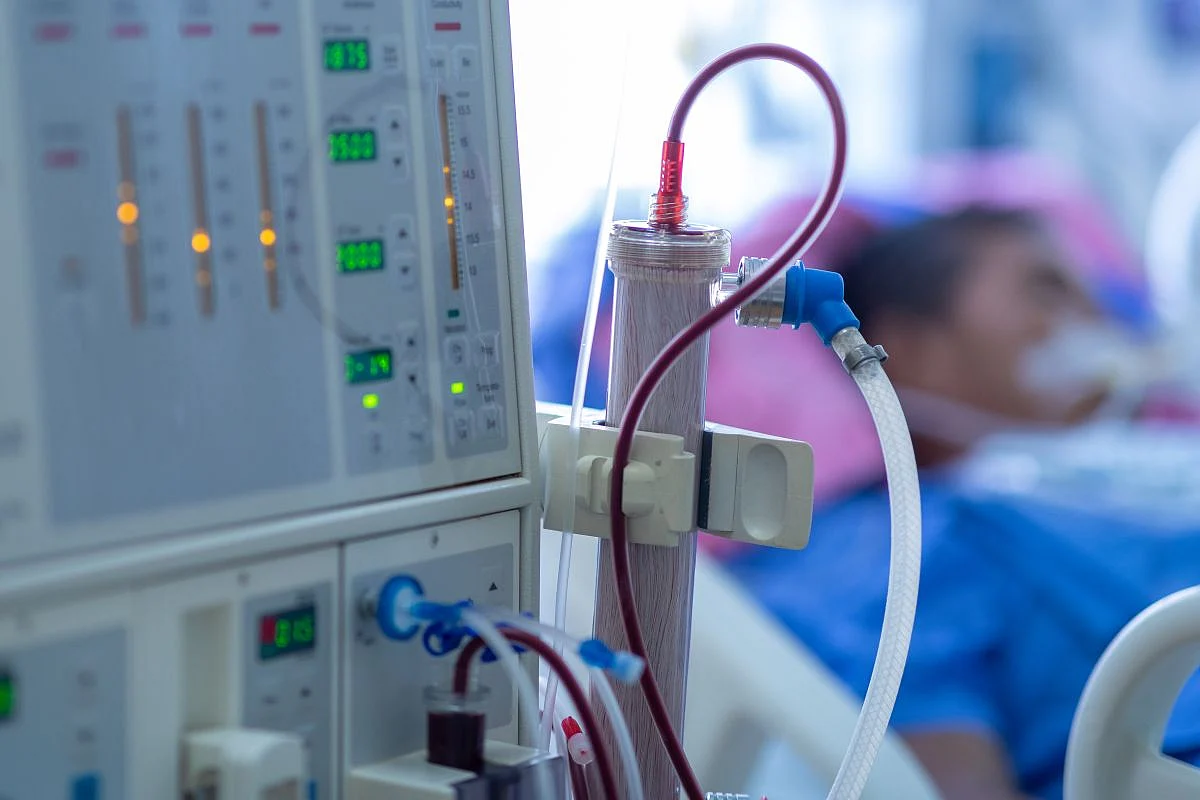Suboptimal Dialysis Initiation Common in Patients With Advanced CKD
FRIDAY, July 25, 2025 -- Suboptimal dialysis initiation, typically defined as dialysis initiation during a hospitalization and/or with a central venous catheter, is common among patients with advanced chronic kidney disease (CKD) followed in multidisciplinary clinics, according to a study published online July 21 in Kidney360.
Amber O. Molnar, M.D., from McMaster University in Hamilton, Ontario, Canada, and colleagues conducted a prospective cohort study to examine risk factors for suboptimal dialysis among patients with advanced CKD followed in multidisciplinary kidney clinics. Suboptimal dialysis initiation was the primary outcome, defined by dialysis initiation during a hospitalization or with a central venous catheter in patients younger than 75 years.
Overall, 366 patients were included, and of these patients, 33 percent had a suboptimal dialysis start (69 percent of dialysis starts) during a median follow-up of 1.9 years. The researchers found that the risk for suboptimal dialysis initiation was lower in association with higher hemoglobin (adjusted hazard ratio, 0.96). Mean hemoglobin was 10.7 g/dL among those with suboptimal dialysis initiation. A higher risk for suboptimal dialysis initiation was seen in association with a higher comorbidity index and greater number of nephrologist visits within the past six months (adjusted hazard ratios, 1.17 and 1.70, respectively). There were no associations seen for measures of health literacy, kidney disease knowledge, or influenza vaccination with suboptimal dialysis initiation.
"In conclusion, we did not find easily modifiable patient-related risk factors for suboptimal dialysis initiation," the authors write. "The next best step is likely improved kidney failure risk prediction tools applicable to the advanced CKD population that use a timeline over which KRT (kidney replacement therapy) preparation typically occurs (i.e., 6-12 months) combined with starting KRT preparation sooner in high-risk patients."
Abstract/Full Text (subscription or payment may be required)
Disclaimer: Statistical data in medical articles provide general trends and do not pertain to individuals. Individual factors can vary greatly. Always seek personalized medical advice for individual healthcare decisions.
© 2025 HealthDay. All rights reserved.
Read this next
Heat May Modify Impact of Toxic Metal(loid)s on Kidney Health
TUESDAY, Sept. 30, 2025 -- Heat may modify the impact of toxic metal(loid)s on kidney health, according to a study published in the Nov. 15 issue of Environmental...
Guidance Issued on Impact, Management of Potassium, Phosphorus in CKD
THURSDAY, Sept. 25, 2025 -- Guidance is presented for understanding the impact of potassium and phosphorus additives on people with chronic kidney disease (CKD) and managing their...
Machine, Deep Learning Models Improve Prediction of CKD Progression
MONDAY, Sept. 15, 2025 -- Machine learning and deep learning models applied to integrated clinical and claims data can improve prediction of chronic kidney disease (CKD)...
More news resources
- FDA Medwatch Drug Alerts
- Daily MedNews
- News for Health Professionals
- New Drug Approvals
- New Drug Applications
- Drug Shortages
- Clinical Trial Results
- Generic Drug Approvals
Subscribe to our newsletter
Whatever your topic of interest, subscribe to our newsletters to get the best of Drugs.com in your inbox.


